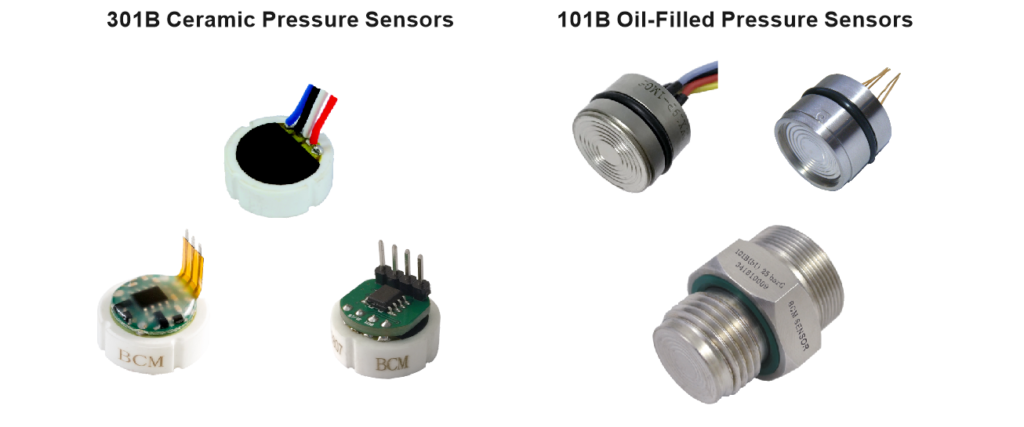BCM SENSOR has been manufacturing and supplying high quality ceramic pressure sensors (model 301B) and oil-filled pressure sensors (model 101B). These two series pressure sensors are of piezoresistive working principle and cover wide measuring ranges from 0~0.1bar to 0~1000bar. They are used not only for mass production of pressure transmitters but also being integrated in systems to measure or monitor the system pressure.
These two series pressure sensors feature different pros and cons when used for different applications as listed below:
301B Ceramic Pressure Sensors
Pros:
- high resistance to corrosion thanks to ceramic material,
- cost effective for high volume application, and
- free of any filling oil or fluid.
Cons:
- requiring an O-ring to seal a sensor in assembly, and
- only for gauge pressure reference.
Suitable applications:
- automotive industry,
- compressor and HVAC systems, and
- biomedical instrumentation.
101B Oil-Filled Pressure Sensors
Pros:
- able to measure pressures of absolute, gauge (or relative), and sealed gauge pressure reference,
- able to measure pressure down to 100 mbar,
- higher output (>60mV @ 5Vdc excitation), five times higher than that of the ceramic sensors,
- higher accuracy up to 0.25%fs than that of the ceramic sensors, and
- can be assembled in transmitters or systems via welding process without need for O-ring for seal.
Cons:
- filled with silicone oil, and
- isolation diaphragm very thin.
Suitable applications for:
- manufacturing of pressure transmitters and pressure calibrators, and
- pressure controls or monitoring in pneumatic and hydraulic systems.

To meet different needs of pressure application, BCM SENSOR offers various options of output signal and electrical interface, for example:
– output signal: millivolt, 10%~90%Vc ratiometric, I2C, SPI, or ZACwire;
– electrical interface: pins, flying wire, or flexible flat cable.
For more details, please refer to 301B and 101B datasheets on BCM SENSOR website.